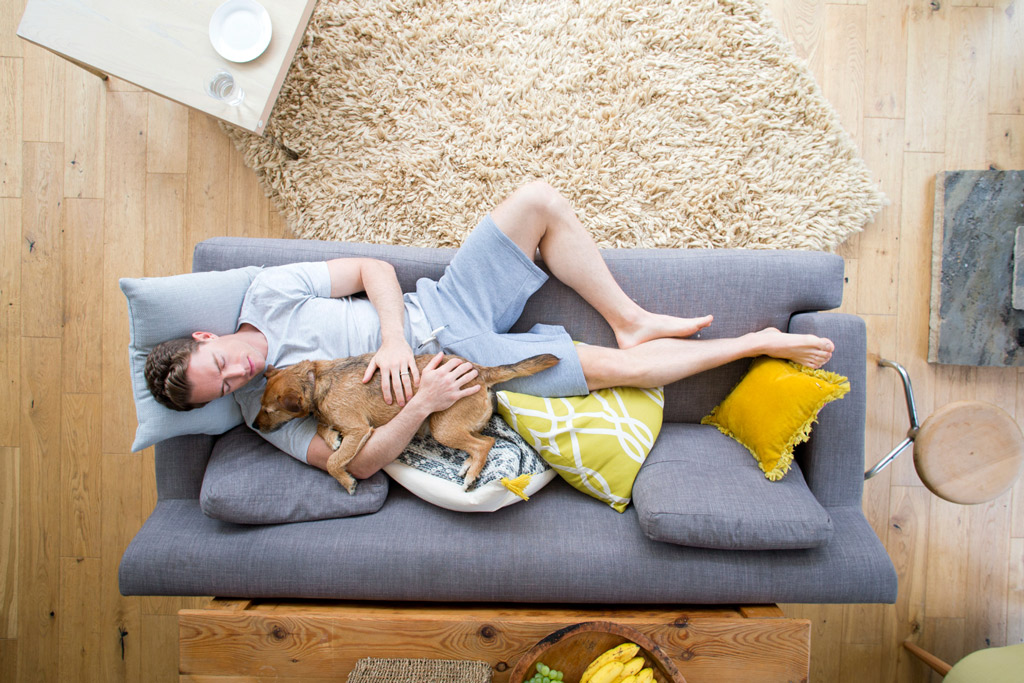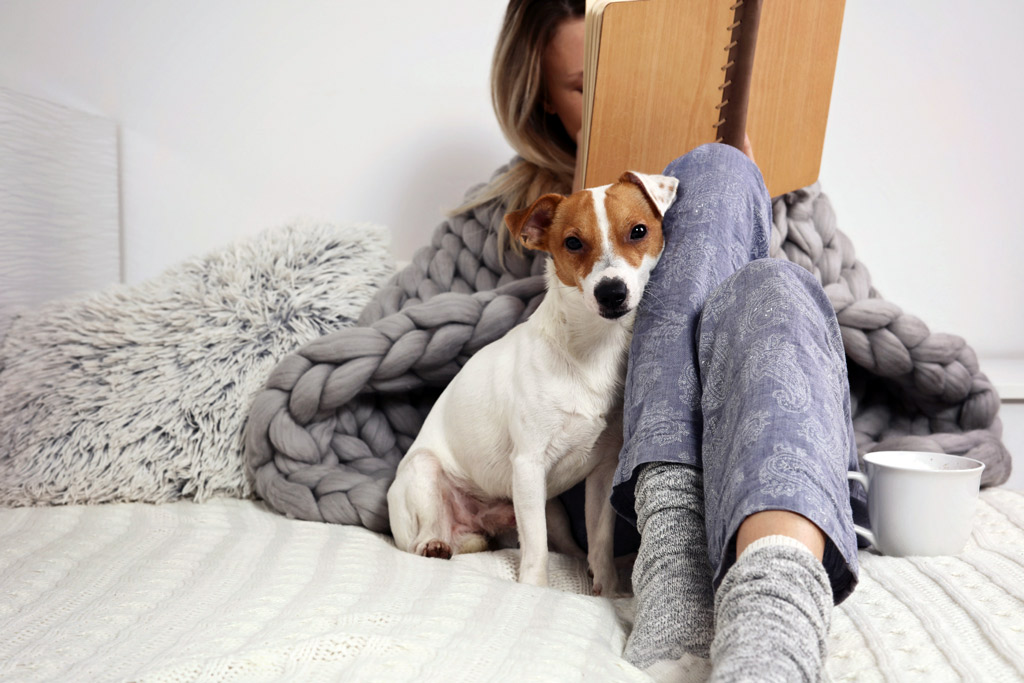
Daily dog exercise is widely promoted by many dog associations, animal welfare and other dog specialists.
But do dogs need a day off? Unless your dog has a health condition or competes in dog sports, dogs don’t need a day off. Instead, dogs need daily exercise (walks, playtime or other activities) to stay physically and mentally stimulated.
That being said, overexercising your dog isn’t good either and if your dog suffers from an illness, anxiety or other fears, you can always slow down and rest.
These sort of situations are the exception to keeping your dog on a daily exercise routine and schedule.
Dog Exercise and Rest Schedule
Keeping your pooch physically and mentally active not only promotes good health but also prevents boredom and unwanted behaviours. Plus, spending this time with your dog strengthens the bond you share.
Most dogs are unable to settle down if they haven’t gotten their fair share of exercise during the day.
We can’t expect our pooch to lay down and sleep all day, it’s not in their nature, and they enjoy all forms of exercise, such as:
- Walks.
- Playtime, including games.
- Training.
- And other activities.
After an appropriate amount of exercise, your dog should be able to relax and take a more than deserved nap.
However, there are some safety precautions you should take when exercising with your pooch.

Before Exercise
Prior to exercising your dog or puppy, consider:
- Your dog’s exercise needs: Assessing your dog’s exercise needs and fitness condition comes first. Dogs have different exercise requirements depending on breed, age, health and energy levels. Find out more in How Much Exercise Does a Dog Need? to know what works best for your dog specifically.
- The weather: Check the temperature outside. Dogs can overheat if exercising in warm temperatures, especially Brachycephalic dogs (squashed face dogs). Dogs only sweat through their pads and they lose body heat through panting, so exercise in the morning or late afternoon when the temperature is cooler during the warmer months. Also, hot pavement or sand can burn your dog’s paws. Want some ideas on how to exercise your dog? You’ll find many in our Dog Exercise Indoors and Dog Exercise Outdoors pages.
- Feeding time: Don’t exercise your dog immediately after they have eaten, as this can cause problems such as bloating.
During Exercise
There are a few points to consider when exercising your dog:
- Test your dog’s exercise needs: Regardless of the general guidelines, each dog is different. So, it’s best to test your dog’s energy levels to figure out the appropriate amount of time your dog needs, given his current health state. Use How Often Should I Walk My Dog? as a guide for you to know how to gauge your dog’s walking needs.
- Monitor your dog for fatigue: Watch out for signs of fatigue, such as panting, slowing down their pace, lagging behind you or stopping. If you notice this, allow them to rest.
- Monitor your dog for overheating: Also, make sure that your dog is not overheating, which shows up as excessive panting, drooling, and even vomiting. If this happens, move them to a cooler place and under shade immediately. Apply cool water to their head, neck and chest. Finally, give them some water to drink. For more on overheating, visit the Dog Care during Vacations: Get Ready for Summer or Winter page.
- Build your dog’s stamina gradually: Avoid forced exercise. Even if your dog should be able to walk for 20minutes, it doesn’t mean that you should always hit that target, regardless of how your pooch is feeling. Also, start slow, without forcing your dog, and gradually increase the amount of exercise until you reach the recommended amount for your pooch. For instance, it might take you weeks to move from 5 minutes on the lead up to 20 minutes, and that’s totally fine!
- Keep your dog hydrated: For longer exercise routines, make sure you have fresh water available to offer to your dog. You can use a collapsible bowl or a bottle for dogs (Amazon links) – the 2nd option has a special spout.
After Exercise
After exercising your dog or puppy will need:
- Water: Especially if you had a long exercise session and your dog hasn’t drunk any water during that period.
- Food: After your dog has calmed down, and if it’s feeding time according to your dog’s schedule, you can feed your pooch.
- Rest: Now is time for a nap! Let your dog retire to his safe zone.

Dog Rest Time Activities
Not every day is the same for you and your pooch, and there many ways to provide him with mental and physical stimulation besides walks.
When you cannot go for walks, don’t feel bad about it.
You can replace your dog’s walks (aside from potty breaks) with training, sniffing, chewing or indoor playtime.
Our Dog Exercise Indoors guide contains useful tips and activities for keeping your pooch active and stimulated, inside your home.
Besides those options, what else can your dog do when he wants to rest?
- Cuddles: This is a great reward for dogs and owners. It’s a great way to keep each other company, show and foster affection!
- Interactive toys: To keep your dog entertained and stimulated even while eating, you could feed meals from kongs and puzzle toys. Also, you can give your dog a raw bone from the butcher or a chew toy (Amazon links).
- Sleep: Dog’s sleeping patterns vary depending on age, breed and environment. According to the American Kennel Club, adult dogs should sleep between 12 and 14 hours per day. Puppies, despite being a ball of energy when they are awake, need up to 18 hours of sleep per day!
- Massages: Dog massages are extremely beneficial for your dog’s health, flexibility and circulation. It’s also a great reward after an exercise session!

Related Questions
Your dog’s breed, age, health and energy levels will determine your dog’s exercise needs. Adult dogs require between 30 minutes to 2 hours plus of exercise daily, depending on the breed. Use our How Much Exercise Does a Dog Need? guide to find out what works best for your dog specifically.
Introducing dog play to your dog’s daily routine is a fun and engaging way to contribute to your furry friend’s wellbeing.
Here’s a list of activities that can help your dog stay healthy and have fun:
1. Fetch games for extra exercise.
2. Tug games when you are tired.
3. Treat-release toys for break-time.
4. Frozen treats that will surprise your dog.
5. Digging adventures with no fuss.
6. Spice up your dog walks.
7. Teach your dog new tricks.
In our Dog Play guide, you’ll discover more about keeping your dog mentally stimulated whilst having fun playing games.
